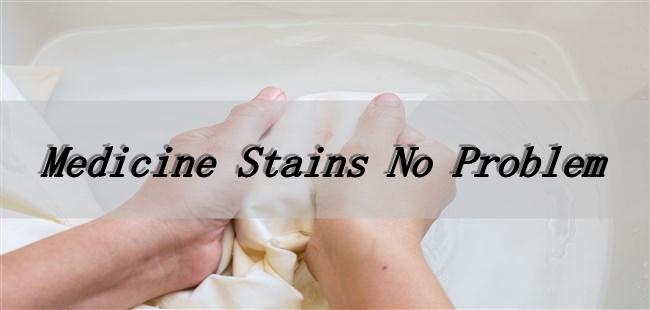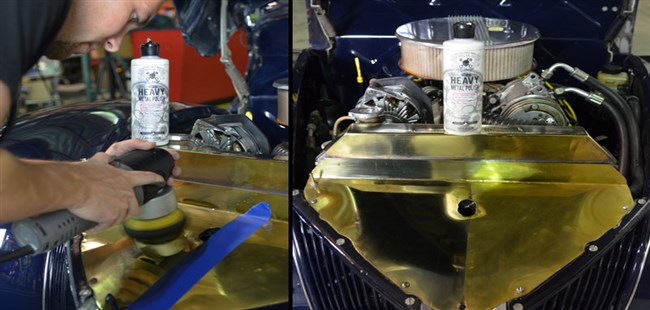Cleaners, medicines, and adhesives are household substances that can cause difficult stains, particularly on carpets. Stains from cosmetics and candle wax are common in some homes. Tar and creosote stains require careful treatment.
Shoe Polish
• On carpets: Scrape off the deposit with a metal ruler. Apply turpentine or a liquid stain remover to dissolve any traces. Rinse with clear water, then use denatured alcohol to remove any remaining color. Apply carpet shampoo.
• On fabrics: Washable fabrics will respond to either a stain remover or a little ammonia added to the rinse water when washing. Treat nonwashable fabrics as for carpet.
Metal Polish
• On clothes Clean off any deposits with paper towels. Use a liquid stain remover, then launder as usual.
• On furniture Sponge with warm water, let dry, and brush well. Apply a spray stain remover to lift marks.
• On carpets: Spoon and blot up as much polish as you can. Dampen the area with turpentine, and allow it to dry. Brush off the dried deposit with a brush or cloth, then apply carpet shampoo.
Medicine Stains
Ointments
Ointments leave behind an oily residue. Scrape off the deposit, then treat the area with a grease solvent. If any color remains, apply denatured alcohol on a cotton pad (test first). Hold a pad beneath the stain to prevent any color from transferring through.
Liquid Medicine
• On clothes: Laundering should remove most medicine stains from clothes. If any color remains, apply a little denatured alcohol.
• Hold a pad beneath the stain as you apply the denatured alcohol, testing this treatment on a hidden part of the item first.
• On carpets and upholstery Scrape up the deposit, then wipe the area with a damp cloth. Apply carpet shampoo.
• Preventing stains Keep a roll of paper towels nearby when giving liquid medicine. Use a bib made from a dishtowel when giving medicine to small children.
Iodine Stains
• On carpets To remove stains, use a solution of photographic hyposulfite (this is a chemical used in photography development, which you can purchase at camera stores). Dilute ki tsp (2.5 ml) to 1 cup (250 ml) warm water. When clear, apply carpet shampoo.
• On washable fabrics Launder clothes by hand in .soap flakes and water, with a few drops of ammonia. Wear rubber gloves.
• On nonwashable fabrics Have items professionally cleaned, or use a commercial tea-and-coffee stain remover.
Cosmetics Stains
Cosmetics get spilled on and around the vanity, they come off on clothes and bedding, and they frequently leak inside handbags. Unfortunately, no all-purpose stain- removal technique exists for cosmetics stains.
You must treat each item individually.
On carpets Blot up as much as possible with paper tissues. Apply non-oily nail polish remover on a cotton ball, testing at the edge of the carpet first, since the backing can be damaged if the solvent soaks through. Treat any remaining traces of color with denatured alcohol applied on a white pad of paper tissue. Finally, apply the carpet shampoo.
On furniture Blot well, then apply non-oily nail polish remover, testing carefully first.
Lipstick
On clothes: Sponge with denatured alcohol, then dishwashing liquid. Launder.
On walls: Rub marks gently with a damp cloth wrung out of a warm detergent solution. Use the household cleaner on stubborn lipstick marks.
Mascara
On clothes Use a spray or liquid stain remover to remove mascara stains. If any marks remain after treatment, sponge, allow to dry, then apply a solution of one-part ammonia to three parts of cold water. Rinse, and launder.
Spray and Lotion Stains
Perfume
• On washable fabrics: Rinse out immediately, then launder the item. Apply a glycerin solution to dried stains. Leave for an hour, then launder. Alternatively, rub with a laundry prewash stick.
• On nonwashable fabrics: Apply a glycerin solution as soon as possible. Let sit for one hour before wiping with a damp cloth. Take care not to wet any padding on furniture. Expensive items%hould be cleaned professionally.
Deodorant all surfaces: Blot, then sponge the area with warm water. Repeat if necessary. Use a commercial stain remover on remaining marks.
Lotion
• Cleansing lotions: Blot with tissues, then treat the area with a grease solvent. Launder clothes use carpet shampoo on carpets and upholstery.
• Toning lotions: Squirt the area with soda water, or sponge with warm water. Allow drying naturally.
Hair Spray
Hairspray leaves a sticky deposit on mirrors, producing a blurred effect. Wipe off with a little denatured alcohol on a cloth.
Candle Wax Stains
These are almost unavoidable if you enjoy candlelight. The wax is easy to remove, but colored candles may leave dye stains, which need to be treated after the wax has been removed. Wax does not set completely hard, so it does not require immediate treatment.
On Other Surfaces
• Clothes: Use the treatment for carpets, left. Treat any residual color marks with denatured alcohol (testing first). Hold an absorbent white pad under the stain as you apply the denatured alcohol.
• Furniture and wallpaper: Use the treatment for carpets, left, without lifting any wax first. Use denatured alcohol to remove color on furniture, and an aerosol stain remover for marks on wallpaper.
Adhesive Marks
Adhesives stick to you as well as to whatever is being glued. Scrape up fresh spills immediately, then use the appropriate solvent.
Dried stains are extremely difficult to remove. If you are doing a lot of gluing, buy the appropriate solvent when buying the adhesive.
Fresh Adhesive
• Appropriate solvents: Use non-oily nail polish remover on clear adhesive. Remove contact adhesive with a manufacturer’s solvent. Use a stain remover on airplane glue, liquid grease solvent on latex adhesive, and lighter fluid on epoxy.
• On hard surfaces: Use denatured alcohol. Allow latex adhesives to set, then roll off with your finger. On skin Use lemon juice.
Creosote and Tar Stains
These substances are best left outside, but they often creep in on shoes, swimwear, and beach towels – not to mention clothes.
Because stains from creosote and tar are difficult to remove, take great care not to let them transfer onto any more surfaces.
On carpets: Blot gently, then apply a glycerin solution, and leave for one hour. Rinse with clear water, then use a carpet-spotting kit.
On clothes: Place an absorbent white cloth or tissue pad on top of the stain. Apply eucalyptus oil from below the stain with a cotton ball.
On shoes: Use lighter fluid, but test for affected color.
On furniture: Expensive furnishings should be dry cleaned professionally.






